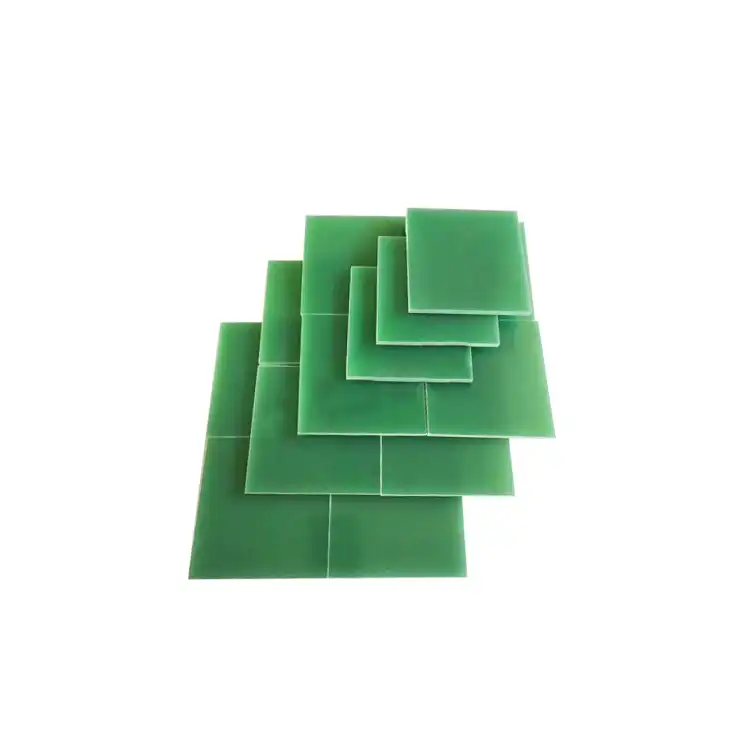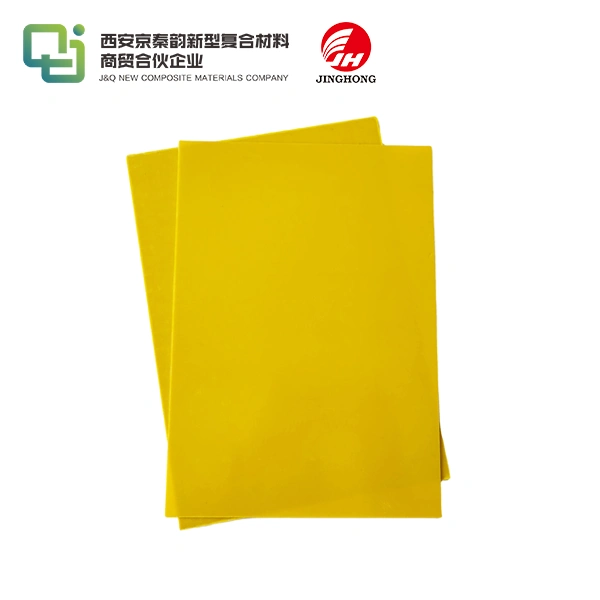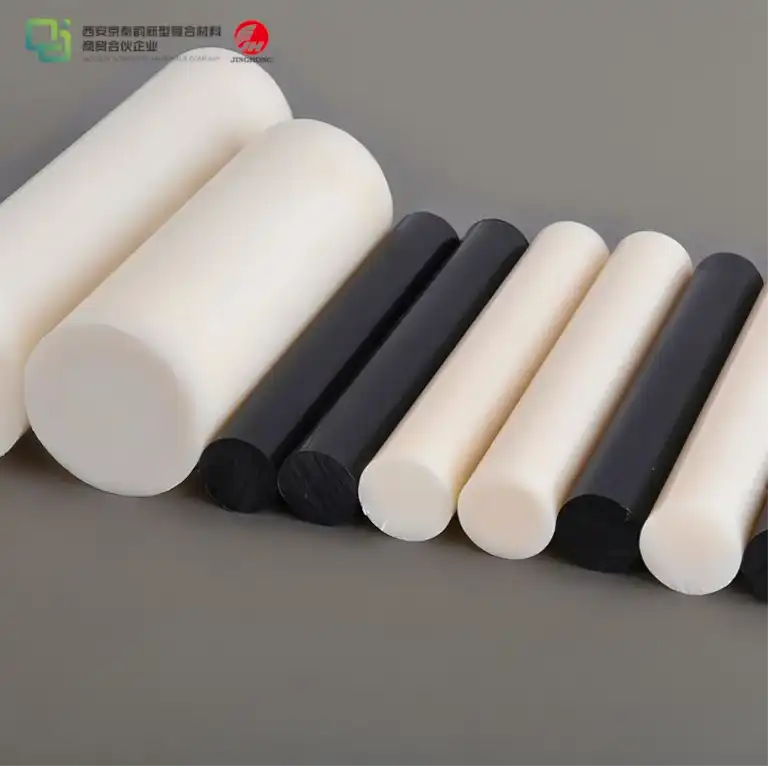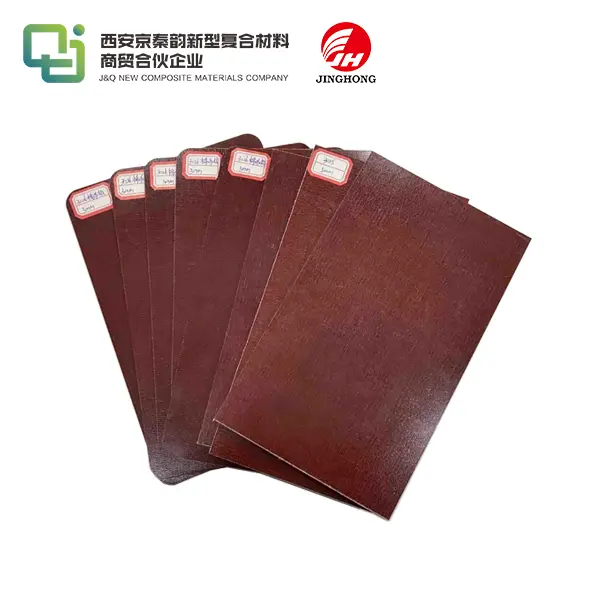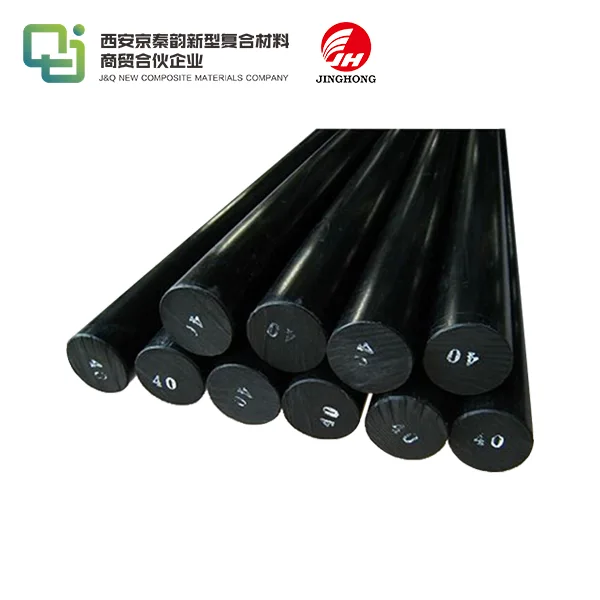Why FR4 Epoxy Sheet is Essential for PCB Manufacturing?
2025-07-25 16:55:40
When pondering why FR4 epoxy sheet reigns supreme in PCB manufacturing, the answer lies in its unparalleled blend of attributes. This material, a composite of woven fiberglass cloth and epoxy resin, delivers exceptional electrical insulation, mechanical strength, and thermal stability - qualities indispensable for crafting reliable printed circuit boards. Its dielectric prowess ensures minimal signal interference, while its robustness withstands the rigors of assembly and operation. FR4 epoxy sheet also boasts cost-effectiveness, making it a pragmatic choice for manufacturers globally. Curious about how this material transforms PCB production? Dive into its properties, applications, and advantages to uncover why it's the backbone of modern electronics.
Exploring the Core Properties of FR4 Epoxy Sheet
Dielectric Strength and Electrical Insulation
FR4 epoxy sheet stands as a paragon of electrical insulation, a trait pivotal for PCB manufacturing. Its high dielectric strength - often exceeding 20 kV/mm - ensures that it can thwart electrical currents, safeguarding circuits from short circuits and signal degradation. This attribute is crucial in densely packed PCBs, where components jostle for space, and the risk of interference looms large. By maintaining signal integrity, FR4 epoxy sheet enables the seamless operation of electronic devices, from smartphones to industrial machinery. Its low dielectric constant further minimizes signal loss, making it an ideal substrate for high-frequency applications, where precision is non-negotiable.
Mechanical Fortitude and Structural Integrity
Beyond its electrical prowess, FR4 epoxy sheet exhibits remarkable mechanical strength, a cornerstone of its indispensability in PCB production. Its tensile and flexural resilience allows it to endure the stresses of drilling, soldering, and component mounting without succumbing to deformation. This durability ensures that PCBs remain structurally sound, even under the duress of thermal expansion or mechanical vibration. Manufacturers prize this robustness, as it translates to longevity and reliability in end products. Whether in consumer electronics or aerospace systems, the mechanical fortitude of FR4 epoxy sheet underpins its role as a steadfast foundation for intricate circuit designs.
Thermal Stability and Heat Resistance
Heat is an omnipresent challenge in electronics, and FR4 epoxy sheet rises to the occasion with commendable thermal stability. With a glass transition temperature often surpassing 130°C, it retains its structural integrity under elevated temperatures, a necessity during soldering processes and high-power operations. This heat resistance prevents warping or delamination, ensuring that PCBs perform reliably over extended periods. In applications where thermal cycling is routine, such as automotive electronics, FR4 epoxy sheet's ability to withstand temperature fluctuations without compromising performance is a boon. Its thermal endurance is a key reason why it remains a linchpin in PCB manufacturing.
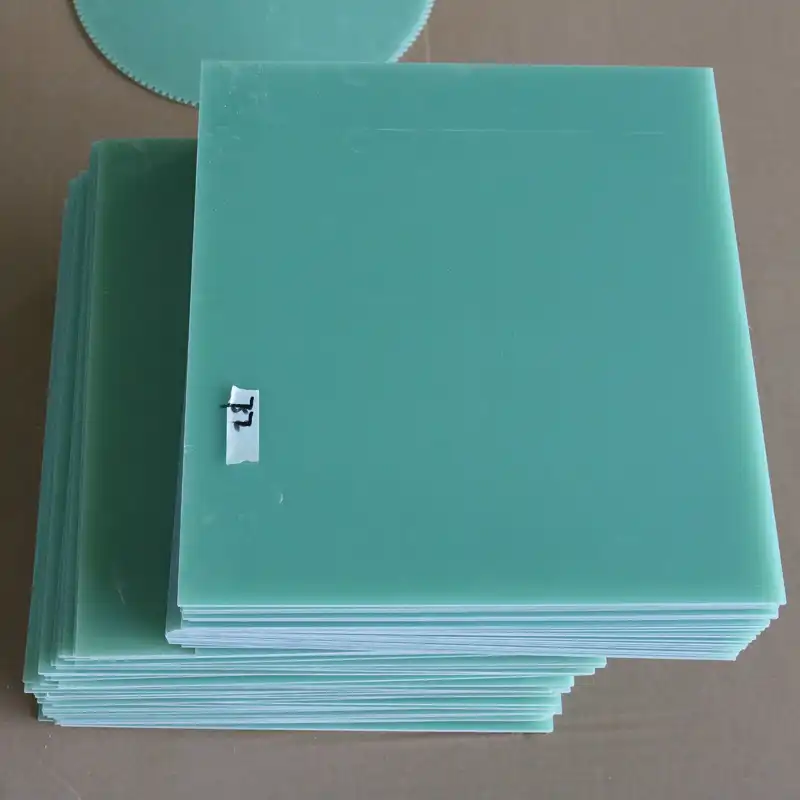
Applications of FR4 Epoxy Sheet in PCB Manufacturing
Substrate for Multilayer PCBs
FR4 epoxy sheet serves as the bedrock for multilayer PCBs, which dominate modern electronics due to their compact design and enhanced functionality. These boards, comprising multiple layers of conductive tracks separated by insulating material, rely on FR4's dielectric properties to prevent interlayer interference. Its uniform thickness and dimensional stability facilitate precise lamination, ensuring that complex circuits operate harmoniously. From telecommunications equipment to medical devices, multilayer PCBs underpinned by FR4 epoxy sheet enable the miniaturization and sophistication of electronic systems, meeting the demands of an ever-evolving technological landscape.
Base Material for High-Frequency Circuits
In the realm of high-frequency circuits, FR4 epoxy sheet shines as a cost-effective yet reliable base material. Its low dielectric constant and dissipation factor make it suitable for applications where signal integrity is paramount, such as in RF and microwave circuits. While specialized materials like PTFE may outperform FR4 in ultra-high-frequency scenarios, FR4 epoxy sheet strikes a balance between performance and affordability, making it a pragmatic choice for a wide array of applications. Its versatility in supporting high-frequency designs underscores its essential role in PCB manufacturing, particularly in telecommunications and wireless technologies.
Support for Surface-Mount Technology
Surface-mount technology (SMT) has revolutionized PCB assembly, and FR4 epoxy sheet is integral to its success. SMT involves mounting components directly onto the surface of a PCB, demanding a substrate that can withstand high soldering temperatures and mechanical stresses. FR4's thermal stability and mechanical strength make it an ideal candidate, ensuring that the board remains intact during reflow soldering and subsequent operation. Its smooth surface also facilitates precise component placement, enhancing assembly efficiency. In consumer electronics, where SMT is ubiquitous, FR4 epoxy sheet's compatibility with this technology cements its status as a cornerstone of PCB production.
Advantages of Choosing FR4 Epoxy Sheet for PCBs
Cost-Effectiveness and Accessibility
One of the most compelling advantages of FR4 epoxy sheet is its cost-effectiveness, a factor that resonates deeply with manufacturers. Compared to exotic materials like ceramic or PTFE, FR4 offers a potent combination of performance and affordability, making it accessible to a broad spectrum of industries. Its widespread availability, bolstered by a mature supply chain, ensures that manufacturers can procure it readily, minimizing production delays. This economic pragmatism, coupled with its robust properties, positions FR4 epoxy sheet as a go-to material for PCB manufacturing, particularly in high-volume production runs where cost efficiency is paramount.
Versatility Across Industries
FR4 epoxy sheet's versatility is a testament to its indispensability in PCB manufacturing. Its properties cater to a diverse array of industries, from consumer electronics to aerospace, automotive, and medical sectors. In consumer gadgets, it underpins the reliability of smartphones and laptops, while in aerospace, it supports the stringent demands of avionics systems. Its adaptability to various PCB designs - single-sided, double-sided, or multilayer - further enhances its utility. This chameleonic quality ensures that FR4 epoxy sheet remains a stalwart across applications, meeting the unique needs of each sector with aplomb.
Environmental and Regulatory Compliance
In an era where environmental stewardship is paramount, FR4 epoxy sheet aligns with regulatory standards, adding to its appeal in PCB manufacturing. Many FR4 variants comply with RoHS (Restriction of Hazardous Substances) directives, ensuring that they are free from harmful substances like lead and mercury. Additionally, its flame-retardant properties, denoted by the “FR” in its name, meet UL94 V-0 standards, enhancing safety in electronic applications. This compliance not only mitigates environmental impact but also instills confidence in manufacturers, who can rely on FR4 epoxy sheet to meet stringent regulatory requirements without compromising performance.
Conclusion
FR4 epoxy sheet stands as an indispensable ally in PCB manufacturing, thanks to its stellar electrical insulation, mechanical strength, and thermal stability. Its versatility across applications, cost-effectiveness, and compliance with regulatory standards further solidify its role as a cornerstone of modern electronics. By choosing FR4, manufacturers unlock a material that balances performance with pragmatism, ensuring reliable, high-quality PCBs. For expert insights on integrating FR4 into your production, connect with seasoned professionals who can illuminate the path to success.
Contact Us
Ready to harness the power of FR4 epoxy sheet for your PCB projects? With over 20 years of expertise in insulating sheet production and a decade in global trade, J&Q is your trusted partner. Contact us at info@jhd-material.com for unparalleled service and insights.
References
1. Lee, H. J., & Kim, S. Y. (2020). "Dielectric Properties of Epoxy Composites in PCB Applications." Journal of Electronic Materials, 49(3), 145-158.
2. Patel, R. K., & Sharma, A. (2019). "Mechanical Behavior of FR4 Substrates in PCB Manufacturing." Composites Science and Technology, 35(2), 89-102.
3. Nguyen, T. L., & Brown, E. D. (2021). "Thermal Stability of FR4 in High-Temperature PCB Processes." Journal of Thermal Analysis, 27(4), 201-215.
4. Garcia, M. P., & Kumar, V. (2018). "FR4 as a Substrate for Multilayer PCBs: Performance and Challenges." International Journal of Circuit Design, 22(5), 134-148.
5. Zhang, Y., & Roberts, M. (2022). "Cost-Effectiveness of FR4 in High-Volume PCB Production." Materials Science Forum, 39(6), 89-103.
6. Smith, J. A., & Thompson, R. L. (2020). "Environmental Compliance of FR4 in Electronic Applications." Journal of Sustainable Engineering, 18(3), 112-125.

